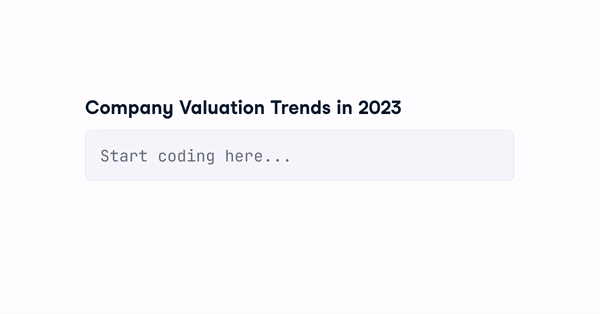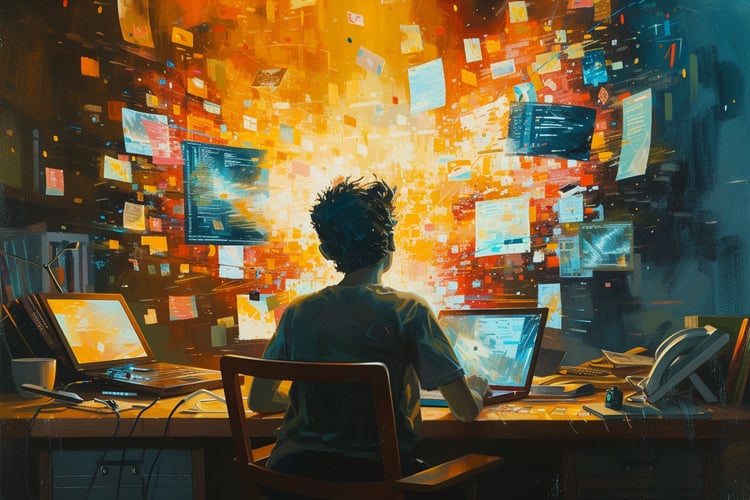Track
Generative Artificial Intelligence (AI) is artificial intelligence capable of generating text, images, and other media using generative models. It’s one of those discussions you can’t seem to escape these days. Ever since the release of ChatGPT, people have been anticipating the next development in the field, and it’s just arrived.
OpenAI, the creator of ChatGPT,released Midjourney’s latest competitor, DALL-E 3 in October 2023. The model is said to improve on many of the previous limitations possessed by its predecessors, DALL-E and DALL-E 2, as well as generating media more accurate to the prompt than Midjourney.
This article serves as an introduction to DALL-E 3, how to access it, and how to use it.
OpenAI Fundamentals
Get Started Using the OpenAI API and More!
What Is DALL-E 3?
DALL-E is an image generation generative AI model created by OpenAI. It was first launched in January 2021, with the latest release being its third iteration.
The model generates images based on natural language inputs known as prompts. Namely, given a few short phrases, the model comprehends the language and creates accurate pictures representative of the description it was given.
As a fun fact, the creators came up with the name “DALL-E” by blending together the names of Salvador Dali, the famous Spanish surrealist artist renowned for his technical skill, and Pixar’s 2008 movie, WALL-E.
As we alluded to above, the DALL-E model has undergone various upgrades since its conception.
Evolution of the DALL-E Series
One thing DALL-E, DALL-E 2, and DALL-E 3 have in common is that they’re all text-to-image models developed using deep learning techniques that enable users to generate digital images from natural language. Other than that, there are quite a few differences. For example, the first iteration of DALL-E, revealed by OpenAI in a blog post in 2021, generated images from text using a version of GPT-3 modified to generate images.
More specifically, DALL-E 1 used a technology known as a Discrete Variational Auto-Encoder (dVAE). This technology was based on research conducted by Alphabet's DeepMind division with the Vector Quantized Variational AutoEncoder.
Fast forward one year later to 2022, OpenAI announced DALL-E’s successor, DALL-E 2. DALL-E 2 sought to generate more realistic images at high resolutions, combining concepts, attributes, and styles.
To achieve this feat, DALL-E 2 improved the techniques used. For example, the DALL-E 2 generates higher-quality images using a stable diffusion model that integrates data from the Contrastive Language-Image Pre-training (CLIP) model, which was trained on 400 million labeled images. This model (CLIP) helps to evaluate DALL-E’s output by assessing which caption is most suitable for a generated image.
This brings us to the current day. In September 2023, OpenAI announced the latest addition to the DALL-E series, DALL-E 3. According to the team at OpenAI, DALL-E 3 can understand “significantly more nuance and detail” than its predecessors. Namely, the model follows complex prompts with better accuracy and generates more coherent images. It also integrates into ChatGPT – another OpenAI generative AI solution.
DALL-E 3 Features and Capabilities
Let’s take a look at some of the main features that DALL-E 3 brings to the table, particularly when compared to previous models.
Enhanced context understanding
Compared to its predecessors, DALL-E 3 showcases advanced nuance and more detailed recognition, allowing a seamless transformation of your ideas into precise visuals. Traditional text-to-image technology has been shown to overlook certain words or descriptions, pushing users to perfect the art of prompt engineering.
OpenAI indicates that DALL-E 3 has a superior grasp of context and its standout feature of enhanced precision and efficient image generation. DALL-E 3 has made progressive steps in its ability to produce visuals that mirror and adhere to textual descriptions provided by the user.
The goal was to reduce the complications and hassle of generating images by inputting more detail that closely aligned with the user's needs.
Integration with ChatGPT
Inherently constructed from ChatGPT, DALL-E 3 can guarantee rapid prompt refinement and effortless image adjustments. Users benefit from the convenience of collaborating with ChatGPT as their ‘creative partner’ to aid in generating image concepts.
Safety and legal protocols
With a heightened emphasis on security measures, DALL-E 3 prohibits the generation of images that are explicit, aggressive, or discriminatory to protect the wider community. To respect intellectual property rights and avoid copyright infringement, DALL-E 3 refrains from generating images that resemble living public figures or mirroring distinct styles of living artists.
Just like other AI platforms, DALL-E 3 knowledge is sourced from publicly available data, both visual and text. Absorbing this data allows DALL-E 3 to utilize it to create new images inspired by previously acquired data.
However, not all artists wish for their data to be used by DALL-E 3, therefore, OpenAI offers two avenues for content creators to exclude their images used as training material. They can opt-out by either filling out this online form or preventing the GPTBot, a web data collector, from accessing their content.
Accessibility and Release
A groundbreaking step that has revolutionized the AI landscape, Microsoft Bing has seamlessly incorporated OpenAI’s DALL-E 3 and ChatGPT, democratizing access for all. You can also access DALL-E 3 with ChatGPT Plus subscription.
Phased-release strategy
Microsoft and OpenAI have both adopted a phased-release strategy, ensuring that DALL-E 3 can integrate seamlessly with Bing. At the start, DALL-E 3 was only accessible to selective users and developers to gather feedback and troubleshoot potential problems. Over time, access was expanded to a broad range of users.
Public access
OpenAI has always been committed to ensuring its technology is available to the public. A free public version of DALL-E 3 is available, allowing the wider community to explore the capabilities of AI, without the financial burden. OpenAI continues actively working with educational institutions to use their technology for learning purposes.
Getting Started with DALL-E 3
To use DALL-E 3, a device with access to Bing and an active internet connection. You do not require specialized hardware or software.
Using DALL-E 3 for Image Generation
A step-by-step guide to image generation with DALL-E 3
1. Navigate to the Bing website
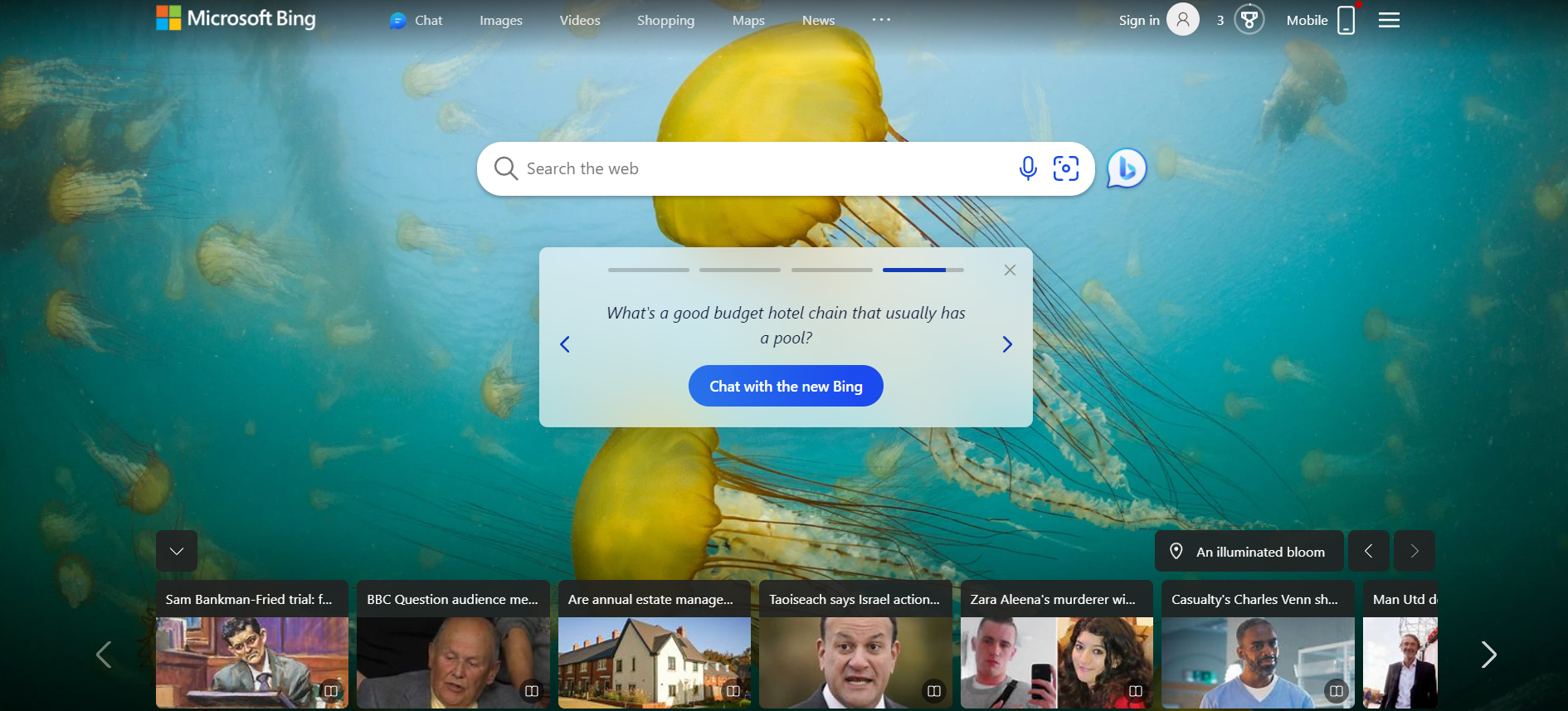
2. Select the “chat” icon in the top left to open the chat interface.

Here’s what the chat interface will look like…
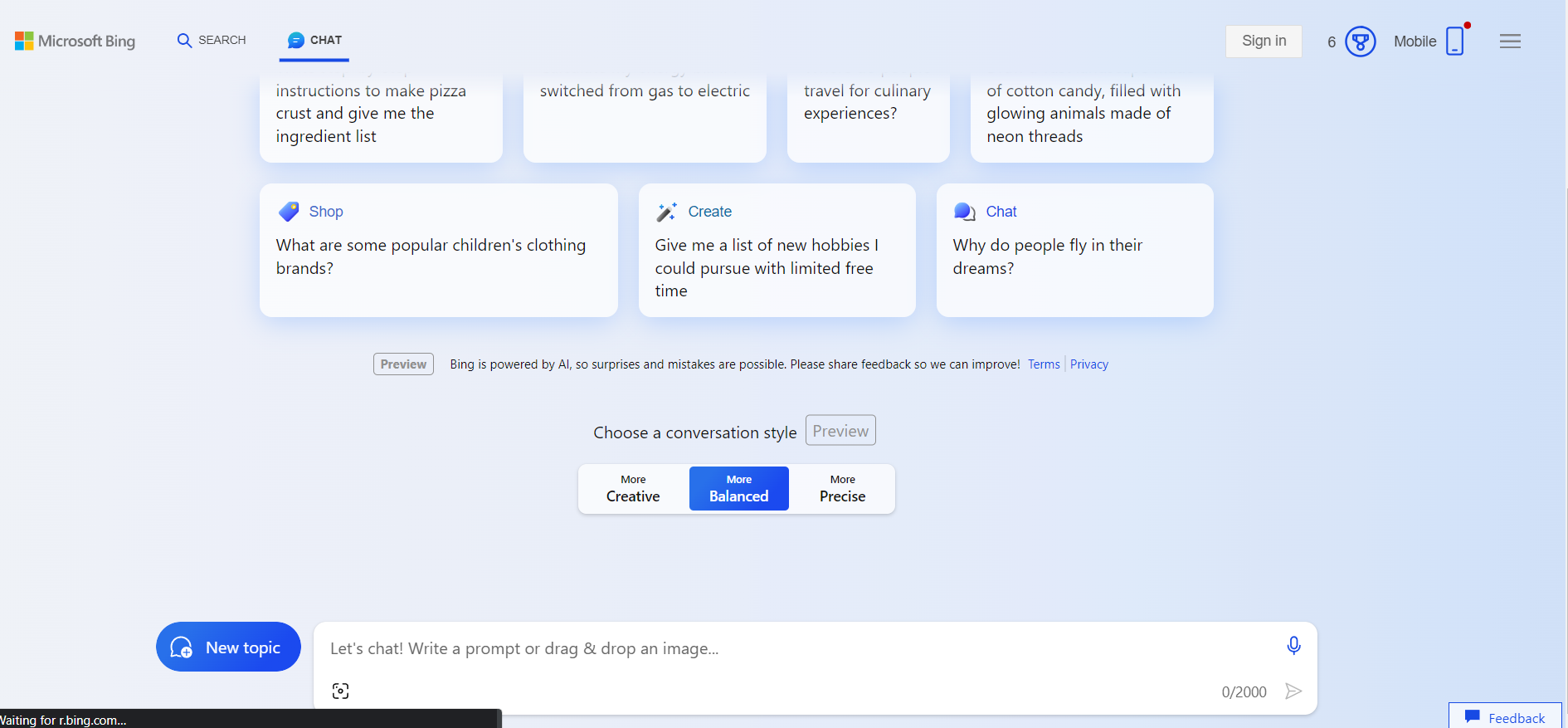
3. Enter a detailed textual description of the image you want to generate then press Enter to submit.
The prompt used was: “Create a movie poster for a horro film titled 'The man next door.’"
Here’s what it generated…
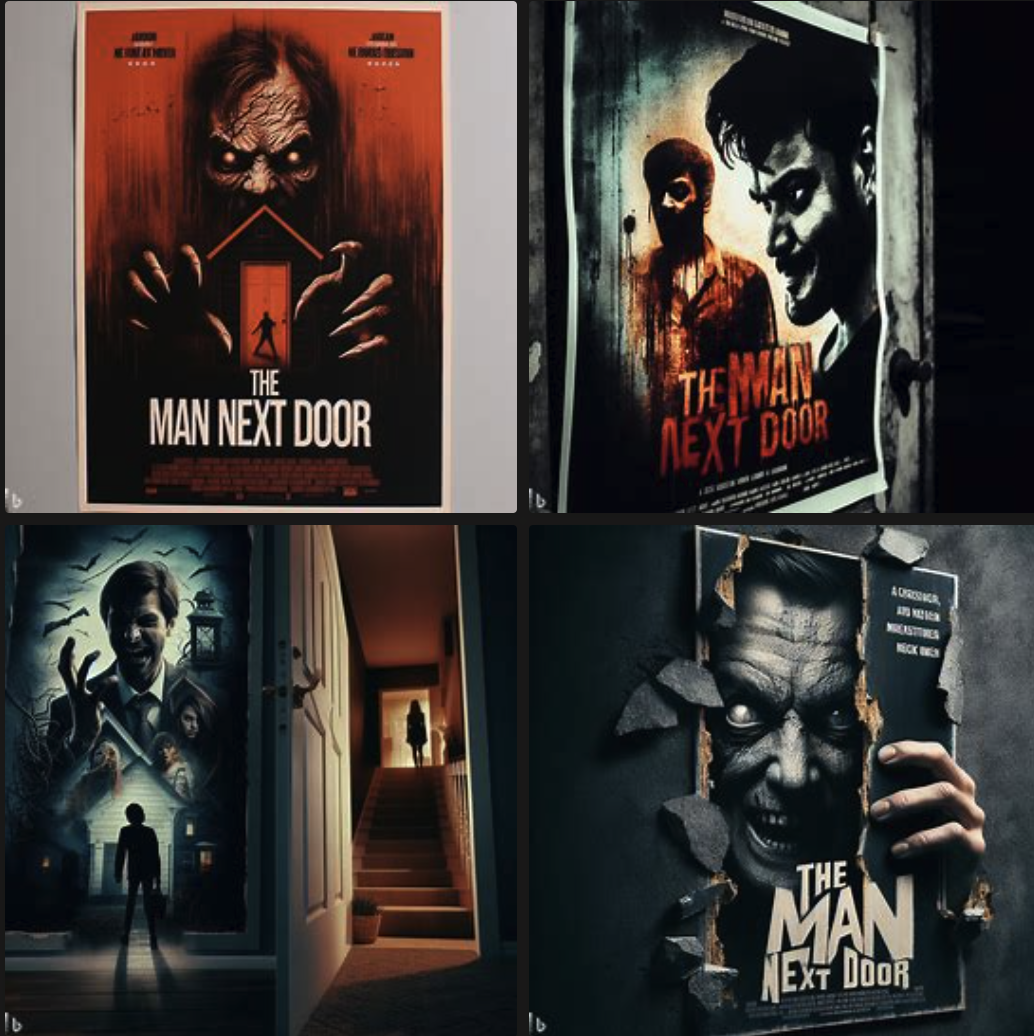
Understanding the output
DALL-E 3 generates multiple image outputs based on your textual description. Browse through the generated images and select the image that best fits your requirements.
Advanced Techniques
Fine-tuning DALL-E 3 for specific tasks
You may want to go that extra mile and provide more specific keywords to guide DALL-E 3 to produce precisely what you desire. For example, if you want to generate an image, you may look for a specific theme or style.
- Use of adjectives. Descriptive adjectives in your prompt can help you better achieve specificity. For example, instead of “A sunset sky over the sea”, you can specify “A fiery red sky over a calm blue sea.”
- Layered descriptions. Adding layers to your prompt can allow DALL-E 3 to combine multiple elements. For example, "A serene blue and pink sky with birds flying in the northeast direction."
- Art styles. If you have a particular art style in mind, add it to your prompt—for example, photo-realistic, illustration, or Van Gogh style.
- Iterative refinement. Your initial prompt may not produce what you desire. Therefore, you can continue to try again and refine it.
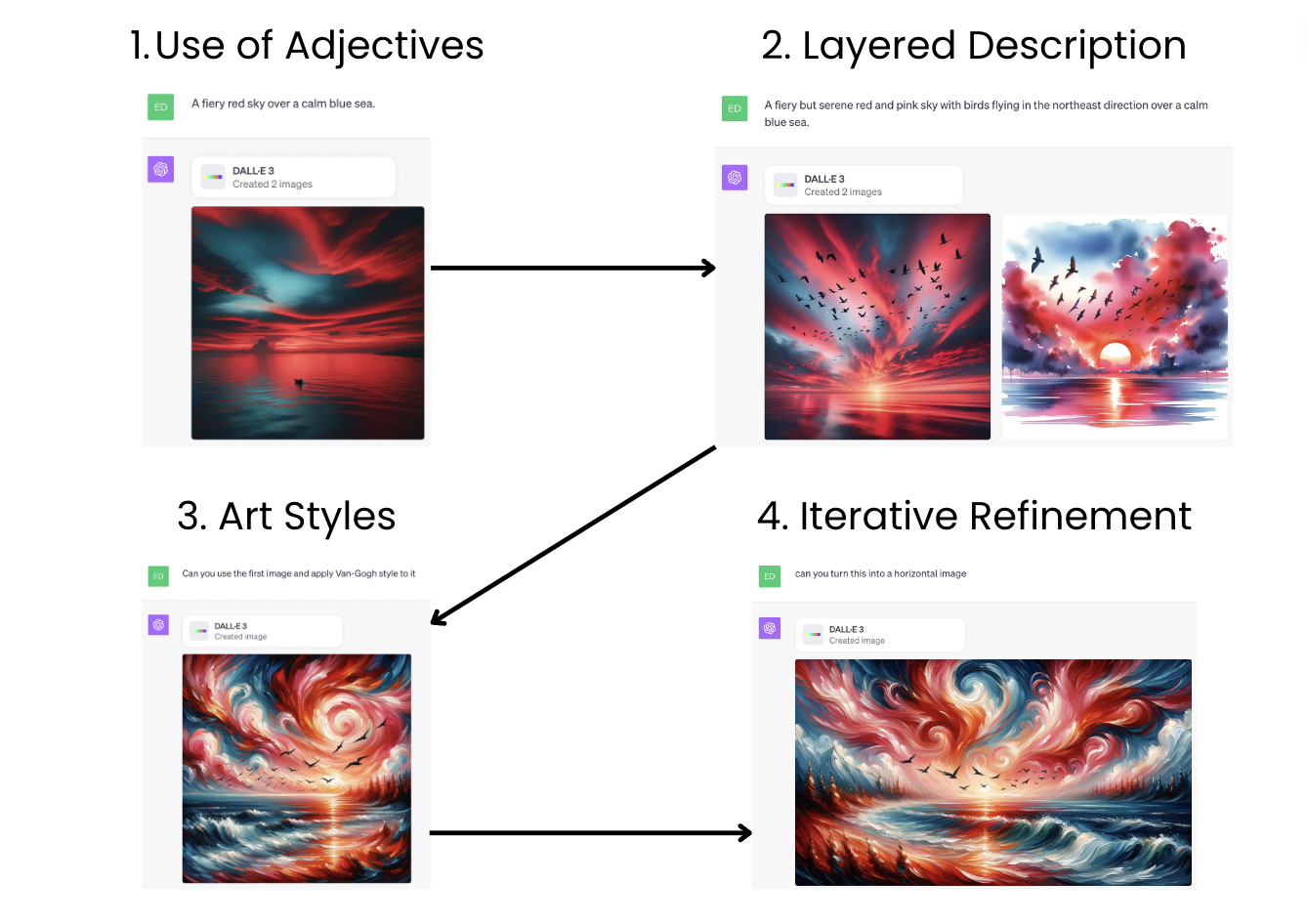
Best practices and tips for using DALL-E 3 effectively
To make your experience with DALL-E 3 more smooth and effective, below are some best practices and tips you can follow:
- Be specific. Context is key, especially with DALL-E 3. Being detailed and specific in your prompts will yield better outputs.
For example, here’s what’s generated when you input “A man.”

… And here’s the difference when you input “A man in a suit, standing in an urban area with sunglasses on while holding a black briefcase and a skateboard.”

- Experiment. Play around with DALL-E 3 till you understand its strengths and weaknesses. The most unexpected prompt can produce the best results.
- Limitations. Understanding a system's limitations will help you work with it, and allow you to continue to refine your prompts.
- Updates. Stay in the loop with any updates to ensure you know the latest changes and get the most out of DALL-E 3.
Practical Applications and Use Cases
DALL-E 3 marks a significant milestone in the realm of AI-driven image generation.
Now that we have connected to DALL-E 3 and understand the possibilities, it's time to delve into its tangible applications. With its generative AI capabilities, DALL-E offers a wide range of possible use cases to aid individuals and organizations, as highlighted below:
Logo design
Businesses, irrespective of their scale, can use DALL-E 3 to create unique and eye-catching logos without extensive design skills. Logos serve as the visual identity of a brand and, therefore, are deemed extremely important. With DALL-E 3, businesses can generate unique logos directly from textual descriptions, which present a unique, efficient, and affordable alternative.
- How it works. By entering a textual description of the desired logo, DALL-E 3 will present various design possibilities for the user. This allows businesses to swiftly iterate through ideas, refine them, and choose a logo that resonates with their brand essence.
Here’s an example prompt you may use: “Flat geometric vector graphic logo of camp shape, black, simple minimal, by Ivan Chermayeff.”
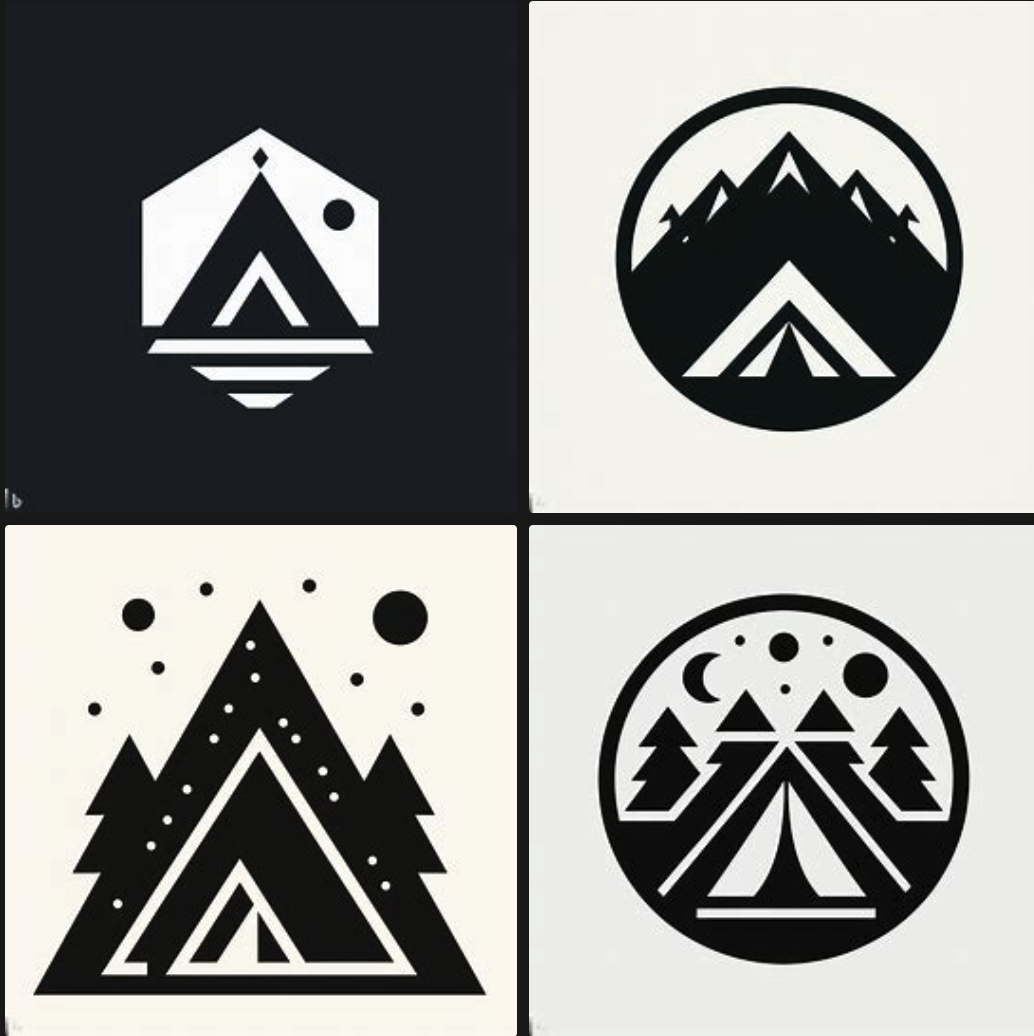
Using DALL-E 3 to create logos
- Benefits. This process negates the cycle of repeated designs, conserving time and resources. Businesses benefit from rapid tweaks, such as seasonal logo variations or events.
Ad posters
Enterprises and individuals can also utilize DALL-E 3 to craft compelling posters that showcase their products and services to attract potential customers.
- How it works. Feeding distinct product details such as color palettes, motifs, and catchphrases into DALL-E 3 provides enough textual context to generate posters tailored for diverse social media outlets.
Here’s an example prompt you may use: “Movie poster for the movie Fight Club, feature Tyler Durden, a lot of black color, in the style of Saul Bass –ar 2:3” [Source; Awesome Poster prompts]
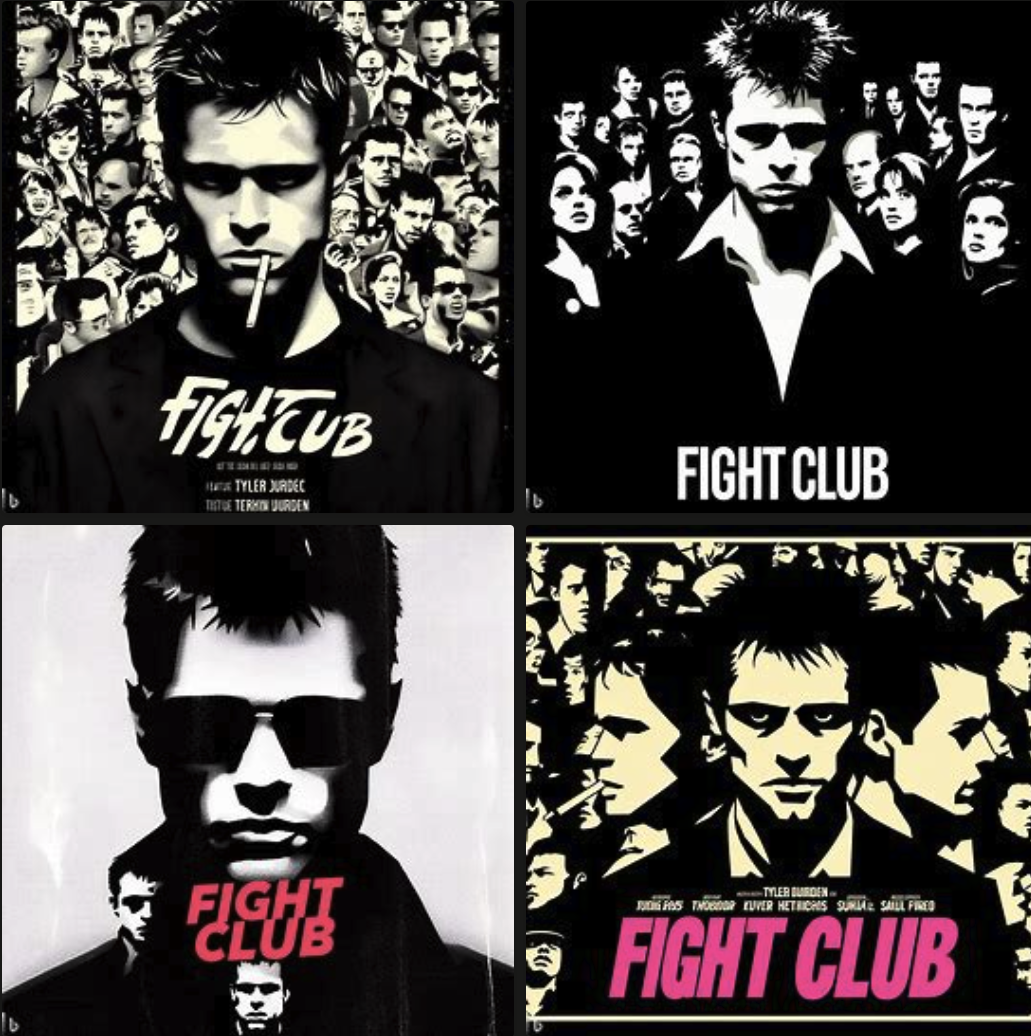
Movie posters created with DALL-E 3
- Benefits. This guarantees a unified brand representation across all platforms, bolstering brand recognition and customer loyalty without incurring the full costs of a traditional design process.
Art and design
Artists can use DALL-E 3 as a supplementary tool, leveraging it to enhance their creative process. From producing foundational drafts for a fashion line, sketching a range of tattoo designs, or crafting distinctive music album art, DALL-E 3 serves as a starting point in which artists can further refine. It introduces fresh pathways for artistic expression and experimentation, making the creative process more dynamic and versatile.
- How it Works. Artists can begin with a rudimentary idea and use detailed textual prompts to generate images, which they can further refine to meet their specific requirements.
Here’s an example prompt you may use: “The night sky full of fireworks by Roy Lichtenstein.”
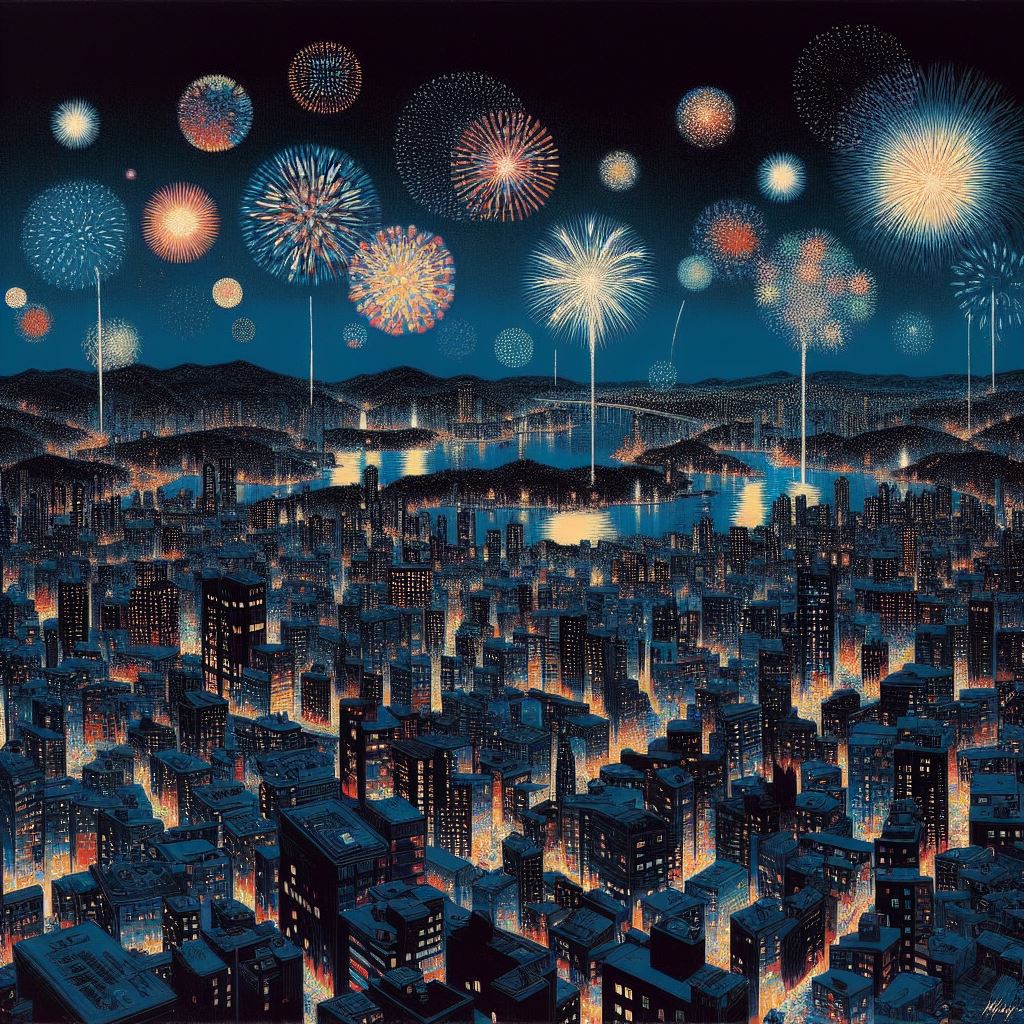
Recreating art styles with DALL-E 3
- Benefits. Naturally, artists can come across creative blockages, which DALL-E 3 eliminates by offering a range of starting points. Artists can explore styles and themes outside their usual repertoire.
Infographics
Journalists can harness DALL-E 3 to design infographics that distill complex data into digestible visuals for the audience.
- How it works. Journalists can feed DALL-E 3 with subject matters, detailed descriptions and also desired visualization types. The AI will offer a textual description of the infographic, which can then be imputed into DALL-E 3 to visualize it for you. The output can be further refined to fit the desired aesthetics.
Here’s an example prompt you may use: “Infographic drawing of ironman suit.”
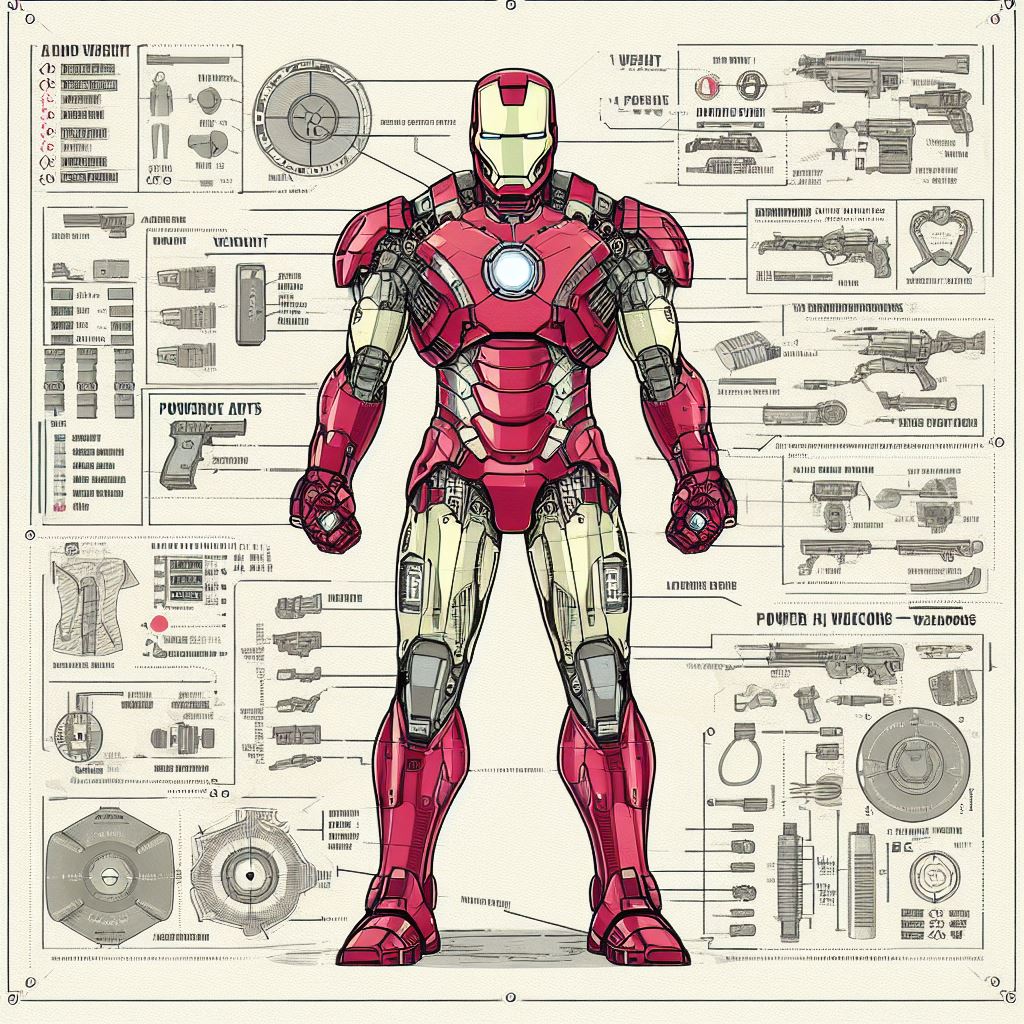
Using DALL-E to create infographics
- Benefits. Speeding up the data visualization process using DALL-E 3 has been shown to reduce time and resources. Visuals that are both precise and captivating can be time-consuming; therefore using DALL-E 3 elevates the overall quality of journalistic content.
Ethical Considerations and Safety Measures
OpenAI has always put ethical considerations and safety measures at the forefront of developing its technology. With the broader community concerned about using AI systems and their implementation into society, it is the owners of these AI systems' duty to ensure society is safe and secure.
DALL-E 2 Backlash
DALL-E 3’s predecessor, DALLE-2, faced backlash when it created false, inappropriate, and discriminative content. For example, DALL-E 2 generated a fake image of an explosion near the Pentagon, which caused the stock market to crash. DALL-E 2’s reliance on public datasets also had an influence on its outputs, which were shown to be biased.
For example, there were higher numbers of generated images that included men than women. This led to another challenge with DALL-E 2, as the training data used was filtered to remove any content that was deemed as violent or sexual, which subsequently reduced the number of women being generated in the images.
Deepfakes and Misinformation
A significant concern shared by the broader community is the generation of deepfakes and other forms of misinformation. Many are concerned about how they tell between real and fake with the implementation of AI systems. One way that OpenAI has done to mitigate this challenge is to reject prompts that involve public figures and image uploads that contain human faces. Furthermore, prompts that contain uploaded images are further analyzed to assess if they contain offensive materials and objectionable content is blocked.
However, a challenge of prompt-based filtering is that users can easily bypass and crack the filter through alternative phrasing. This will allow the AI system to provide a similar result; for example, instead of using the word “blood” in the prompt, the user can replace it with “red liquid.”
Unemployment
Based on what we have learned about DALL-E and its potential use cases and how it can benefit organizations and individuals, it also raises the concern of an increase in unemployment rates for creatives such as artists, photographers, and graphic designers.
OpenAI Safety Measures
OpenAI is committed to ensuring responsible AI governance and is working with other tech giants such as Microsoft, Google, and Meta to ensure AI-generated audio and visual content is watermarked. However, this watermark feature is not yet available in the test version, which has raised concerns about the lack of safety features during the testing phase.
However, that does not mean OpenAI does not have safety features and plans in mind. They have partnered with red teamers - these are known as people who intentionally try to break systems to bring their vulnerabilities, weaknesses, and other areas of improvement to the forefront. This allows OpenAI to stress-test DALL-E 3 and put together the proper risk assessment and mitigations in place to reduce areas of misinformation.
For a deeper dive into the foundations of ethics in AI and to learn how to navigate the intricate world with confidence and responsibility, enroll in our AI Ethics course today!
Conclusion
What a time to be alive. The evolution of DALL-E 3, built on the foundations of its predecessors, has shown to offer unparalleled accuracy, speed, and the ability to understand context.
The strategic partnership between OpenAI and Microsoft has promised widespread accessibility to the public, democratizing AI-driven image generation. Its integration with ChatGPT enhances prompt refinement and a collaborative approach to image generation.
DALL-E 3 stands as a testament to the potential of machine learning and its efficient solutions for visual content generation at our fingertips.
Learn more:
- What are Foundation Models? blog post: DALL-E is a foundational model. This means it’s developed from algorithms designed to optimize for generality. Such models are based on large-scale neural networks that are typically trained on a broad range of data sources to accomplish a variety of downstream tasks (including tasks that it may not have been specifically designed to do) - Learn more about foundational models in this overview.
- The OpenAI API in Python cheat sheet: The OpenAI API is a cloud interface that grants users access to new, pre-trained AI models developed by OpenAI (e.g., DALL-E, Codex, GPT-3). Learn the basics on how to leverage this API with DataCamp’s cheatsheet.
Earn a Top AI Certification

FAQs
What is DALL-E 3 and who created it?
DALL-E 3 is a generative AI model created by OpenAI that generates images from natural language inputs known as prompts.
How does DALL-E 3 differ from its predecessors?
DALL-E 3 offers enhanced context understanding, generates more coherent images, and integrates with ChatGPT for refined prompts and image adjustments compared to DALL-E and DALL-E 2.
How can I access DALL-E 3?
DALL-E 3 is accessible through Microsoft Bing and with a ChatGPT Plus subscription. A free public version is also available.
What are some best practices for using DALL-E 3?
Be specific and detailed in your prompts, experiment with different keywords and styles, and understand the limitations of the model to achieve the best results.
What safety measures does DALL-E 3 include?
DALL-E 3 includes measures to prevent the generation of explicit or discriminatory content, respects intellectual property rights, and employs red teaming to identify and mitigate risks.
What measures have been taken to avoid generating deepfakes and misinformation?
DALL-E 3 rejects prompts involving public figures and analyses uploaded images for offensive content. OpenAI also works with red teamers to identify and mitigate potential risks.

